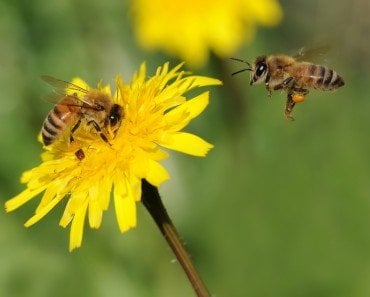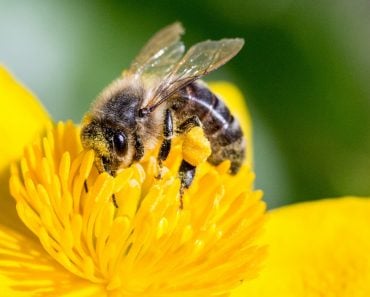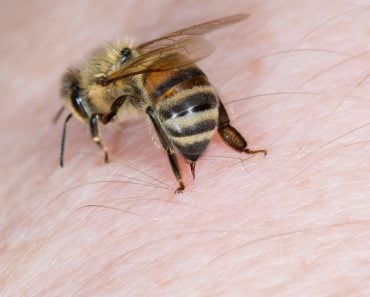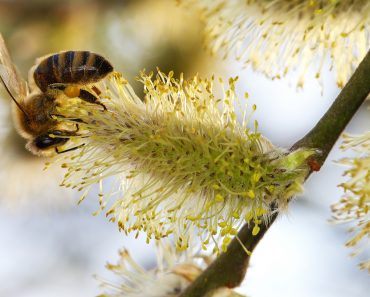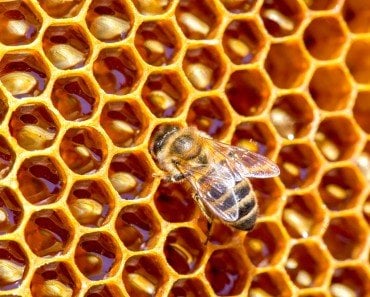Table of Contents (click to expand)
Bees that lose their hive face a number of challenges, ranging from finding their way back home to being accepted in a new colony, but what you might not know is that the majority of bees don’t even have colonies!
When most people think of bees, they imagine the little yellow-and-black insects swarming around their hive, sucking out nectar and pollinating flowers on their daily journeys to and fro. But what if strong winds carry the bees far and wide? What happens when a bee loses its way?
To properly dig into this question, there are a few other characteristics of bees—and some surprising facts—that may be quite enlightening.
Recommended Video for you:
Can Bees Get Lost?
See a bee on a flower, and we assume that the bees know where their home is. But bees can get lost.
If a bee is taken away from its normal environment (e.g., a bee gets trapped in your car and exits the vehicle 120 miles away), or if a bee’s hive is destroyed (e.g., storm, natural disaster, human activity), a bee will have to figure out some way to survive.
The bees that leave the colony in search of pollen and nectar are female workers who are responsible for most of the work in the hive. In an average colony of honeybees, there may be 20,000-80,000 worker bees, a few hundred male drones, and a single queen bee. The male drones have no responsibilities besides mating with an unfertilized queen; they don’t even have stingers.
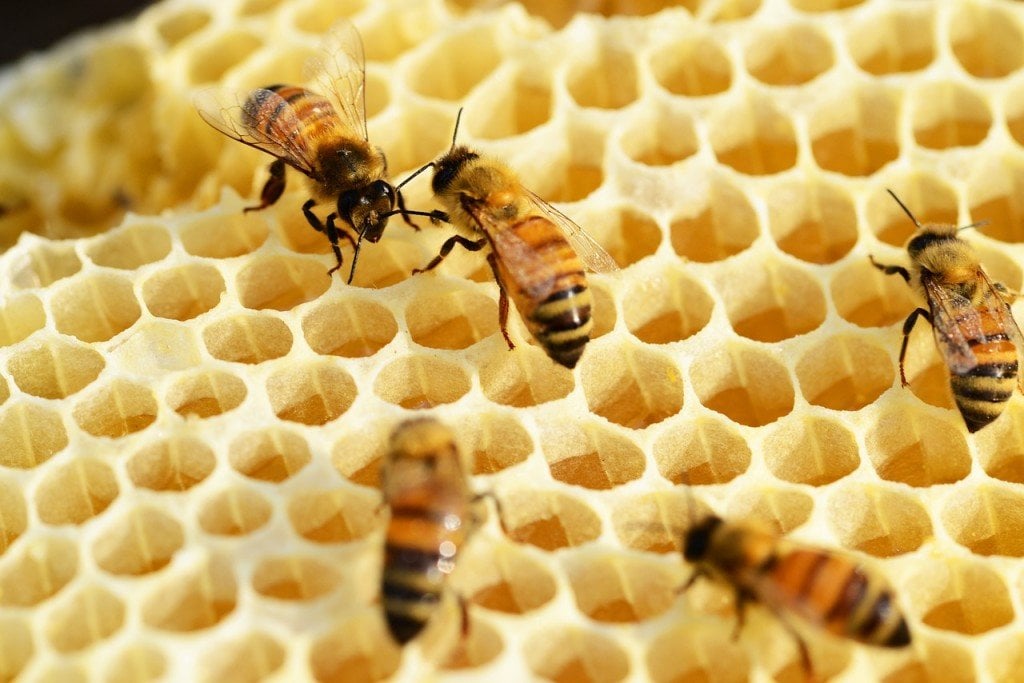
However, surviving outside the colony is essential for the female worker bees. They only have a two-month lifespan, on average, the first two weeks of which are spent working inside the hive, so once they leave the hive to collect pollen and nectar, they don’t want to waste time getting lost.
A single foraging worker bee can travel between 1 to 6 kilometers in one trip. When foraging for food, a bee will find a food source, then return to the hive in a straight line, where it will engage in a short, instructive dance to tell the other bees where the food can be found.
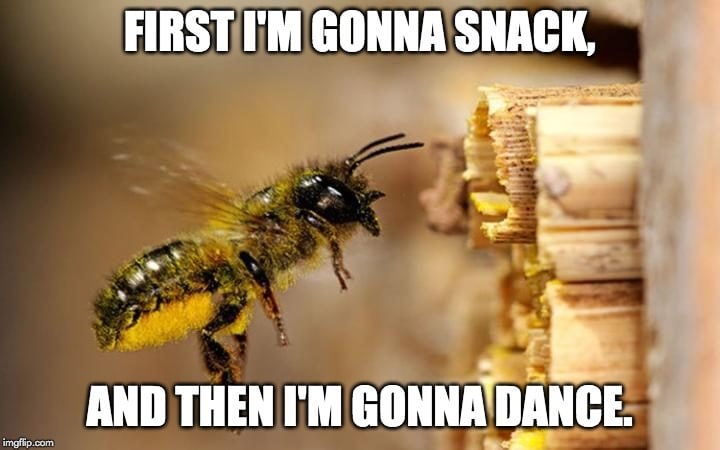
How Bees Find Their Way Back To The Hive
Fortunately, bees are talented navigators. They use the sun as a fixed point and maintain an angle to the sun to know where they are relative to their hive. So, as long as they can see the sun, they can find their way back home.
This is combined with surprisingly accurate mental maps of their immediate surroundings, which they form after their first few flights out of the colony. Together, these are typically adequate to prevent a bee from getting lost while on “their turf.”
This is our best guess at how bees find their way home. Scientists have debated bee navigation for decades, performing interesting experiments to discover the limits to the bee way-finding senses. Scientists have captured bees and taken them to novel locations to check how they would find their way back to their hive.
Researchers have found that along with the sun, the bees might also reference the geography and landscape around them for cues. They do get lost, but they can also course-correct based on new landscape cues! This could mean bees, like mammals, have brains that can store a cognitive map of their environment.
But what is a bee to do if it can’t find its way home or if there isn’t a home left to find?
Can Bees Survive Outside A Hive?
Well, to begin with, only about 10% of bees live in the stereotypical colonies and hives. One of the bees that stay in the hive is the honeybee Apis.
Most bees worldwide are known as “solitary bees” and live alone or in small communal settings with other solitary bees of the same species. There are 20,000 and 30,000 species of solitary bees around the globe, and they play a critical role in pollination, just as social bees do. Still, they don’t get the same level of recognition because we get little direct economic benefit from them.
But, for social bees such as the honeybee, living in service to a queen is what they do! If a honeybee loses its hive or is separated by a large geographical distance with no chance of returning, there is a good chance that it will die.
However, bees also show interesting behavior if their hives are in danger.
At this point, the narrative becomes entirely dependent on what types of bees are involved, the health of the hive, whether the foreign bee is bringing nectar and pollen into the hive, and whether they are heavily doused in pheromones.
Honeybee Drift
There is a phenomenon called “honeybee drift,” which is particularly common when hives are geographically close to one another, such as in apiaries. Basically, each hive is unique, and a chemical signature marks each bee from that hive. “Drifters” from other colonies may be allowed in if the guard bees of the new colony allow it.
About 10% of adult bees work as guards for the nest, inspecting any foreign visitors when they arrive and either chasing them away or allowing them entry. If the guards recognize the chemical signature or the bee is from an interrelated colony, they may be allowed to enter.

If a completely foreign bee or another insect, such as a wasp, attempts to enter, they will likely be chased off or killed if persistent. Furthermore, “raiding” bees are different than drifters/migrants, as they are only attempting to enter to steal honey. Guard bees will also fend off these invaders. Interestingly, in times of plenty (i.e., when resources are plentiful and nearby, the colony’s resource stores are full), the guard bees are likelier to admit foreign bees, even if they aren’t nestmates or closely related. If a bee is willing to contribute to the hive and not steal the resources, it may be allowed to stay.
If a hive is destroyed, meaning that the queen bee and all of the larval bees are lost, then there is no way to restart a colony and salvage it. In partially destroyed hives or in the case of a dead queen bee, a new queen can be inserted, around which the drones and workers will once again unite.
If this isn’t possible, attempting to join another colony is the only option for honeybees, or they will be deprived of food and likely starve. Rogue or drifter bees may get lucky and be accepted into another colony, but in formal studies, only about 30% of foreign bees are accepted through these stringent borders!
A Final Word
Leave it be if you ever see a bee lazily buzzing around your lunch table! These critical pollinators are attacked from all sides, and their lives are hard enough. Also, don’t assume that every bee you see belongs to a nearby hive. There’s a good chance that the bee is living its own solitary life but still doing the important pollination work. If it happens to be a honeybee searching for a new colony, all you can do is wish it luck and hope the new hive feels welcoming and generous!
References (click to expand)
- Bee Navigation - www.asc.ohio-state.edu
- Honeybees welcome friendly migrants to hives but repel ....
- Breed, M. D. (1998, June). Recognition Pheromones of the Honey Bee. BioScience. Oxford University Press (OUP).
- Birmingham, A. L., Hoover, S. E., Winston, M. L., & Ydenberg, R. C. (2004, December 1). Drifting bumble bee (Hymenoptera: Apidae) workers in commercial greenhouses may be social parasites. Canadian Journal of Zoology. Canadian Science Publishing.
- Breed, M. D. (1983, February). Nestmate recognition in honey bees. Animal Behaviour. Elsevier BV.
- Breed, M. D., Cook, C. N., McCreery, H. F., & Rodriguez, M. (2015). Nestmate Recognition in Eusocial Insects: The Honeybee as a Model System. Social Recognition in Invertebrates. Springer International Publishing.
- Danforth, B. N., Minckley, R. L., Neff, J. L. (2019). The Solitary Bees: Biology, Evolution, Conservation. United Kingdom: Princeton University Press.


